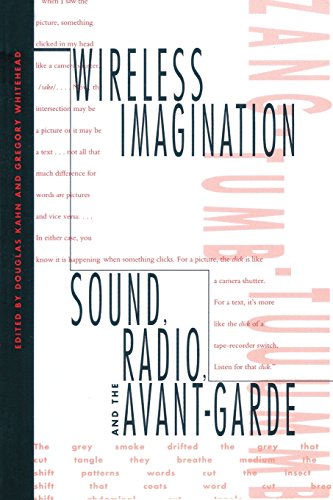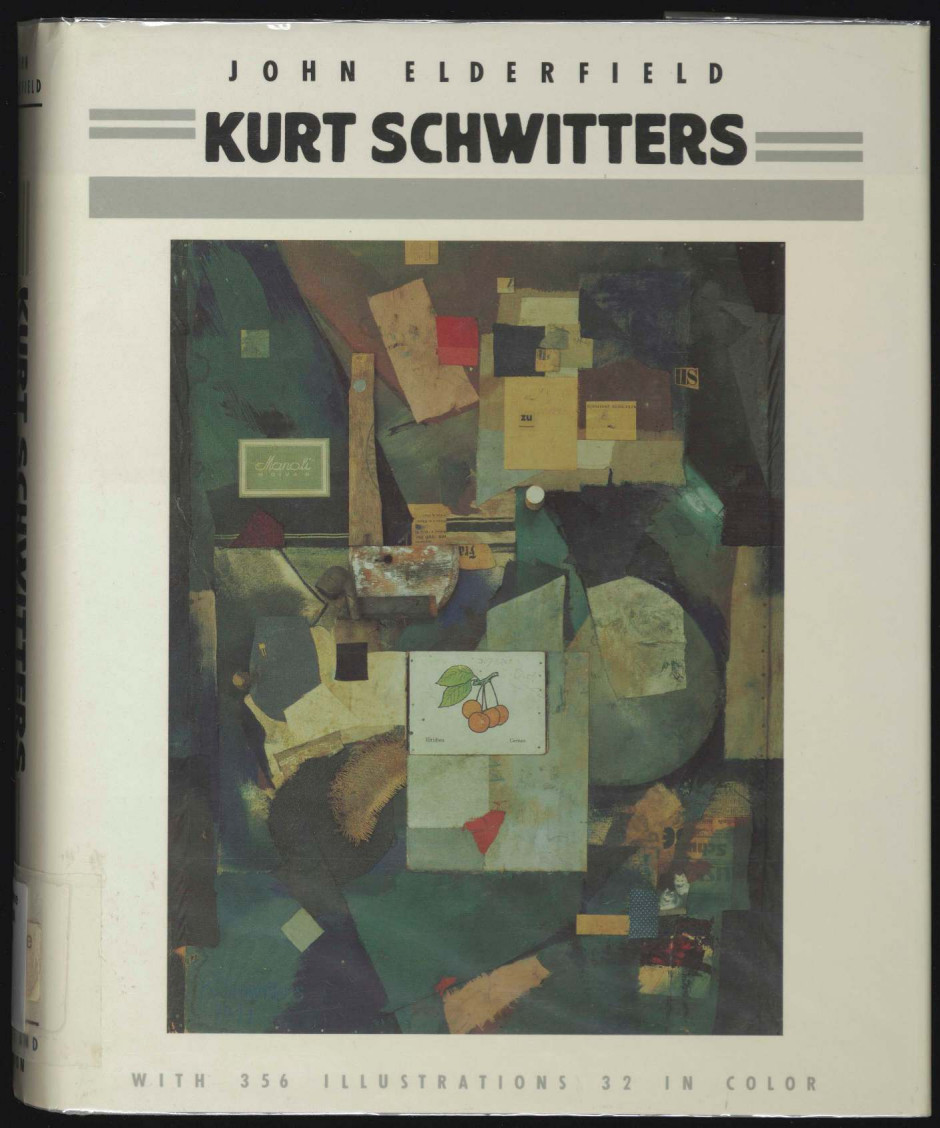Douglas Kahn, Gregory Whitehead (eds.): Wireless Imagination: Sound, Radio, and the Avant-Garde (1992)
Filed under book | Tags: · art history, audio art, avant-garde, dada, futurism, music, music history, phonograph, radio, radio art, sound, sound art, surrealism

“Wireless Imagination addresses perhaps the most conspicuous silence in contemporary theory and art criticism, the silence that surrounds the polyphonous histories of audio art. Composed of both original essays and several newly translated documents, this book provides a close audition to some of the most telling and soundful moments in the ‘deaf century,’ conceived and performed by such artists as Raymond Roussel, Antonin Artaud, Marcel Duchamp, André Breton, John Cage, Hugo Ball, Kurt Weill, and William Burroughs.
From the late nineteenth century to the 1960s, the essays uncover the fantastic acoustic scenarios projected through the writings of Raymond Roussel; the aural objects of Marcel Duchamp; Dziga Vertov’s proposal for a phonographic ‘laboratory of hearing’; the ZAUM language and Radio Sorcery conjured by Velimir Khlebnikov; the iconoclastic castaways of F.T. Marinetti’s La Radia; the destroyed musics of the Surrealists; the noise bands of Russolo, Foregger, Varèse, and Cage; the contorted radio talk show delivered by Antonin Artaud; the labyrinthine inner journeys invoked by German Hörspiel; and the razor contamination and cut-up ventriloquism of William S. Burroughs.”
With essays by Douglas Kahn, Charles Grivel, Craig Adcock, Christopher Schiff, Mel Gordon, Gregory Whitehead, Allen S. Weiss, Mark E. Cory, Frances Dyson, and Robin Lydenberg.
Publisher MIT Press, 1992
ISBN 0262111683, 9780262111683
xi+452 pages
Reviews: Timothy Dean Taylor (Postmodern Cult, 1993), David L. Austin (Art Doc, 1993), Gerald Hartnett (Leonardo Music J, 1994), Stephen Miles (Notes, 1994), Ágnes Ivacs (Artpool, n.d.).
PDF (98 MB, no OCR)
Comment (0)391, 1-19 (1917-1924) [French]
Filed under artist publishing, magazine | Tags: · art, avant-garde, dada, poetry

391 was a Dada magazine edited by Francis Picabia and published between 1917 and 1924 in 19 numbers in Barcelona (nos. 1-4), New York (nos. 5-7), Zürich (no. 8) and Paris (nos. 9-19).
Contributors included Guillaume Apollinaire, Louis Aragon, Walter C. Arensberg, Céline Arnauld, Hans Arp, Pierre Albert-Birot, André Breton, Gabrielle Buffet, Jean Cocteau, Jean Crotti, Robert Desnos, Paul Dermée, Paul Éluard, Albert Gleizes, M. Goth, Max Jacob, M. Laurencin, René Magritte, Pierre de Massot, E.L.T. Mesens, Francis Picabia, Man Ray, Georges Ribemont-Dessaignes, Erik Satie, Walter Serner, Philippe Soupault, Tristan Tzara, Edgard Varèse, Marius de Zayas, a.o.
The issue 12 features Francis Picabia’s “Manifeste Dada” with reproduction of Marcel Duchamp’s L.H.O.O.Q.
Edited and published by Francis Picabia, Barcelona/New York/Zürich/Paris, January 1917-October 1924
Comment (0)John Elderfield: Kurt Schwitters (1985)
Filed under book | Tags: · art history, avant-garde, biography, collage, constructivism, dada, machine

“Designed to accompany the Schwitters exhibitions in New York, London and Hanover, John Elderfield’s masterly study of Schwitters fulfils all the promise of his articles on that artist from the years 1969 to 1977 and surpasses any other academic work on the same subject in five major respects: first, in its attention to all phases of Schwitters’s work (the pre-1917 and post-1937 phases as well as the classically Merz period); second, in its judicious and balanced attention to all aspects of Schwitters’s multi-media work; third, in its refusal to reduce Schwitters’s artistic and theoretical work to one simple set of ideas or to privilege one mode of expression over another; fourth, in its generous sense of the rich artistic background (Cubism, Sturm, Dada, Constructivism) out of which Schwitters’s variegated work arose; and fifth, in its prodigious familiarity with the vast secondary literature dealing with the Modernist avant-gardes. The extent of Elderfield’s research is immensely impressive and the result of this is an authoritative, clearly-written book which combines a sure grasp of factual detail, a shrewd analytical sense vis-a-vis individual works, a complex understanding of the theoretical problems posed by Schwitters’s cpuvre and a fluid empathy with all of its levels. Quite apart from the 355 high-quality illustrations, the uniform excellence of Elderfield’s text makes the book indispensable for any serious student of German and European Modernism and effortlessly accessible to the non-specialist as well.” (Richard Sheppard’s 1986 review)
Publisher Thames and Hudson, London, 1985
ISBN 0500234264
424 pages
via MoMA
Reviews: Richard Sheppard (J Eur Studies, 1986), Dawn Ades (Burlington Mag, 1986).
Comment (0)
